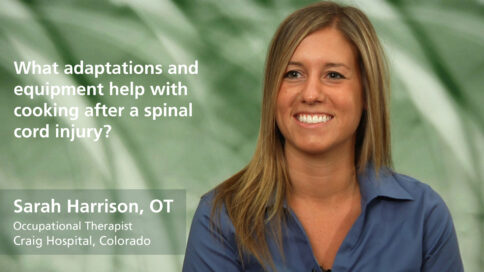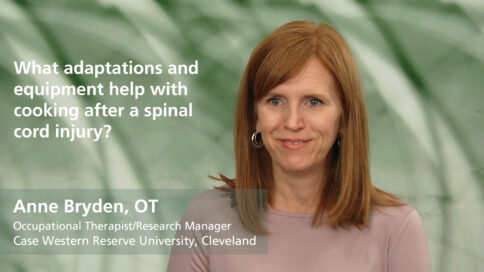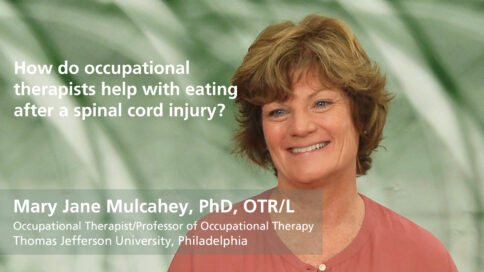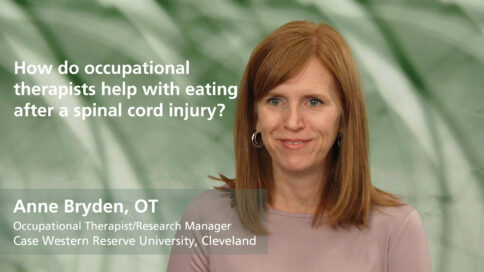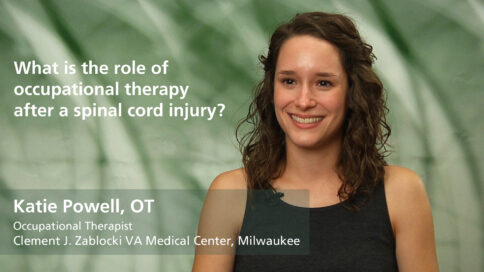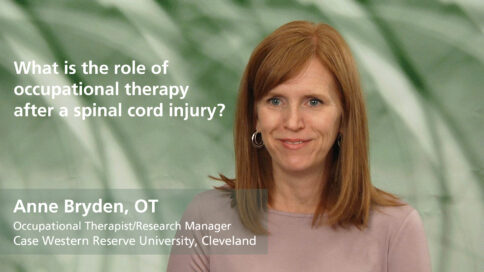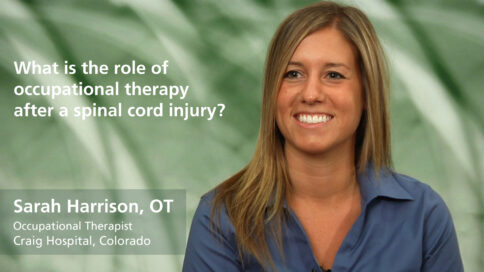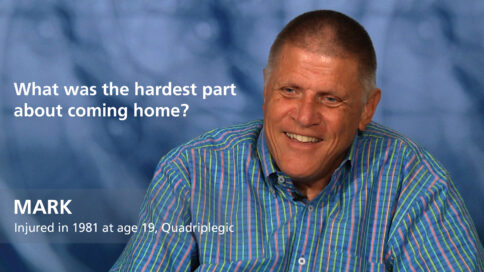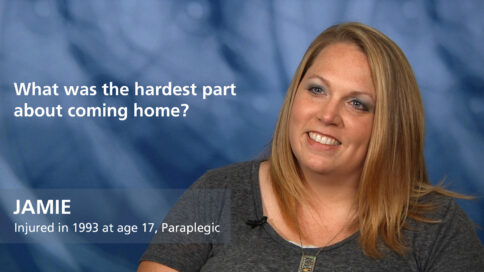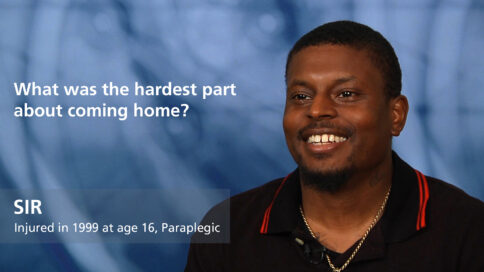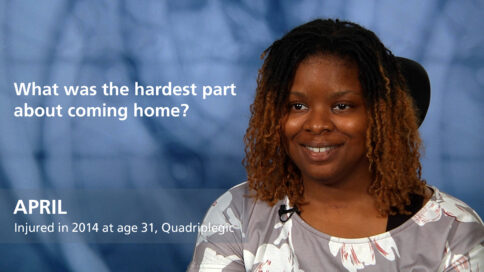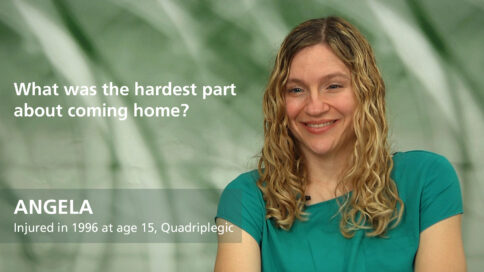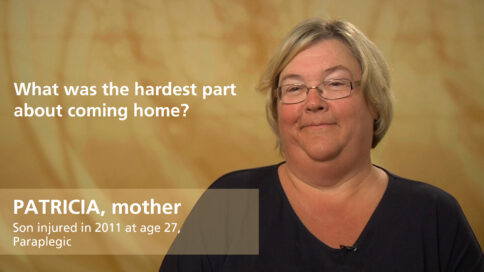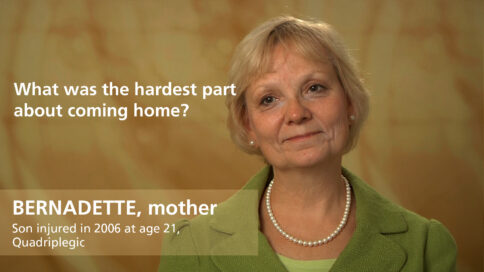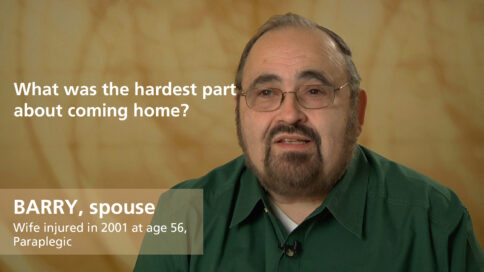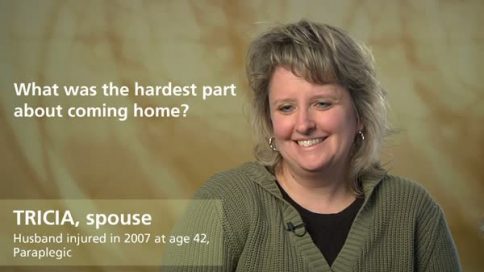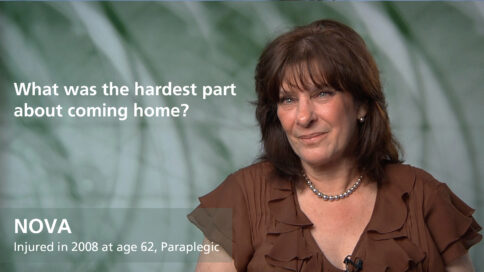What adaptations and equipment help with cooking after a spinal cord injury? - Katie Powell, OT
|
|
What adaptations and equipment help with cooking after a spinal cord injury? |
|
Katie Powell, OTOccupational Therapist, Clement J. Zablocki VA Medical Center, Milwaukee |
||
| Read Bio | More Videos by Katie Powell | |
|
Share |
||
Transcript
If somebody is interested in being able to cook, we look at first what’s the set up of their kitchen? Do they have a workspace that they can sit at and do mixing or meal prep? Can they safely access the stovetop or safely put things in the oven? Are they able to use a microwave on a countertop? So first I’m looking at access—can the person get to the areas of the kitchen they need to? In terms of the adaptive equipment with cooking, it’s different for every person. So let’s say somebody enjoys baking but doesn’t have the hand function to hold a spatula. I look at — is there a piece of equipment I can give them that helps them hold the spatula? Do they have reduced hand function and can’t use a standard can opener? We have adaptive can openers. Are they able to cut, but maybe one hand is stronger than another? We have cutting boards that hold the food for them, so instead of using one hand to hold and one hand to cut, you just need one hand to cut. We have special bowls that have higher edges on one side and lower edges on another to make it easier to access in terms of stirring. The possibilities are endless; if somebody wants to be able to cook, as an occupation therapist I’m going have them try the task and go from there with what equipment they would need to be able to do it their home.
Show Less|
|
||
add
What adaptations and equipment help with cooking after a spinal cord injury? |
||
Katie Powell, OTOccupational Therapist, Clement J. Zablocki VA Medical Center, Milwaukee |
More Videos by Katie Powell | |
| Transcriptadd | share | |
If somebody is interested in being able to cook, we look at first what’s the set up of their kitchen? Do they have a workspace that they can sit at and do mixing or meal prep? Can they safely access the stovetop or safely put things in the oven? Are they able to use a microwave on a countertop? So first I’m looking at access—can the person get to the areas of the kitchen they need to? In terms of the adaptive equipment with cooking, it’s different for every person. So let’s say somebody enjoys baking but doesn’t have the hand function to hold a spatula. I look at — is there a piece of equipment I can give them that helps them hold the spatula? Do they have reduced hand function and can’t use a standard can opener? We have adaptive can openers. Are they able to cut, but maybe one hand is stronger than another? We have cutting boards that hold the food for them, so instead of using one hand to hold and one hand to cut, you just need one hand to cut. We have special bowls that have higher edges on one side and lower edges on another to make it easier to access in terms of stirring. The possibilities are endless; if somebody wants to be able to cook, as an occupation therapist I’m going have them try the task and go from there with what equipment they would need to be able to do it their home.
